Why Does Tokyo Disney Resort Seem To Get All The Best Rides? Here's The Short And Long Answer
If it looks like Tokyo Disney Resort gets all the best rides, that's because they do.
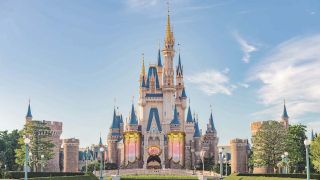
There are 12 Disney theme parks in six different locations around the world. Each one has unique attractions that help it to stand out, and give fans reasons to want to visit all the different destinations. And while there are some incredible, and iconic attractions at every park, there is a common belief among many that, for some reason, Tokyo Disney Resort seems to get all the best rides.
While to some extent, what the “best rides” are is always going to be subjective, there is a reason why Tokyo Disney Resort’s attractions look as though a great deal more time and money have been spent spent on them. That's because, for the most part, more time and money is spent on them. There's a short answer and a long answer as to why that is.
The Short Answer
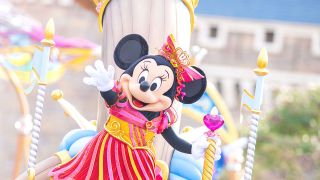
Tokyo Disney Resort is not owned or operated by The Walt Disney Company. The Oriental Land Company runs the resort and pays licensing fees and royalties to Disney for the use of the company's IPs. The resort is the company’s primary revenue source, so it benefits them to spend the time and money to make the park the best it can be.
The Long Answer
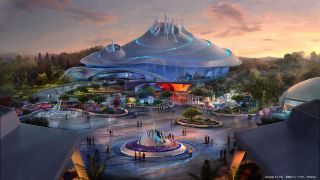
Of course, there’s a lot more to it than that. How did Japan get the first Disney theme park outside of the United States? And how was it done in such a way that Disney's limited control over the resort results in better attractions?
How The Oriental Land Company Brought Disneyland To Japan

While Disneyland was seen by many as “Walt’s Folly” when it opened in 1955, it was an immediate hit. Many other places in the world became interested in getting their own Disneyland, and one nation that really wanted one was Japan. An attempt to bring a Disneyland park to Japan in the 1950s resulted in the creation of Nara Dreamland, a not officially licensed park that still resembled Disneyland, though without the characters.
In 1960 the Oriental Land Company was founded with the specific purpose of reclaiming land in the city of Urayasu and transforming it into a major leisure facility. After significant research, it was determined that what Japan needed was its own Disneyland. According to OLC's own story, in 1972 the company reached out to Disney to discuss the possibility of building the first Disneyland outside of the United States. In 1974 an agreement was reached.
Under the deal, the new park would be wholly owned and operated by Oriental Land Company. As reported by Skift, OLC pays Disney licensing fees and royalties for the use of Disney characters and movies. They also have access to Walt Disney Imagineering who designs all the park’s attractions.
CINEMABLEND NEWSLETTER
Your Daily Blend of Entertainment News
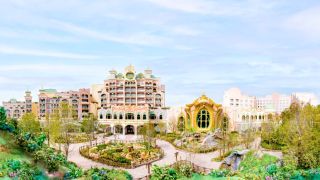
Tokyo Disney Resort Is Low Risk For The Walt Disney Company, And It Had To Be
Because of the deal between The Walt Disney Company and OLC, the deal is fairly low risk for Disney with little chance of losing money. It doesn’t cost Disney much beyond the time of Walt Disney Imagineering to design attractions, and OLC pays for that. Tokyo Disney Resort is practically free money for Disney.
This is certainly a pretty nice deal for Disney, but the fact of the matter is it had to be. If it hadn't been, Tokyo Disney Resort likely would not have happened. Disney CEO at the time Card Walker had been putting off the OLC execs because Disney was already in the middle of building another theme park. In The Imagineering Story, former Imagineering President Carl Bongirno said...
Card did not want to do any projects other than EPCOT Center...I said, 'Tell them they're going to pay all the costs.' That'd turn them off. We're not going to pay anything. And we'll get profits off of the top. It was a no-deal deal for them, we thought. So Card got them on the phone. He gave them all of the ridiculous demands and they said, 'Ok, let's go.'
The same situation would be true a decade and a half later when OLC decided to expand Tokyo Disneyland into the Tokyo Disney Resort by adding the Tokyo DisneySea theme park. Many of the projects that went into that park had been ideas for the Disneyland expansion concepts including the unused Port Disney and Westcot Unfortunately, due to the money being lost at the time due to the early struggles of EuroDisneyland, the Disneyland expansion budget was significantly constrained. Disney California Adventure would be built on the cheap as a result.
If Disney had needed to front the costs of either of these parks, they never would have happened. Disney very specifically didn't have the time or the money. But because OLC was paying for everything, the parks were able to be built, and money was no object.
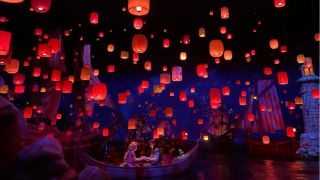
Oriental Land Company Doesn’t Have Other Business Divisions To Run
The idea that Oriental Land Company is simply willing to spend more money on its attractions does appear to be largely true. While we never really know what these things cost, Imagineerers who have worked on these projects have spoken about basically having unlimited budgets when working in Japan.
This is because the Oriental Land Company doesn’t have anywhere else to spend its money. Tokyo Disney Resort is the primary revenue stream for Oriental Land Company. Nearly everything the company owns is either part of the resort or related to it in some way. OLC needs to continue to invest and invest well in the resort because if income from Tokyo Disney Resort falls flat, the entire company would presumably be in trouble.
By comparison, The Walt Disney Company has a lot going on. While the Disney Experiences division reportedly accounts for as much as 70% of the company’s operating income, Disney still has a lot more going on, including film, television, ESPN, Disney Cruise Line, and of course, merchandise.
On top of that, when Disney is deciding where to spend time and money on its parks, 10 parks around the world need to be attended to, and Disney has to do something for all of them. Suppose Disney were to ignore budgets and spend all the money in the world for an incredible attraction at Disneyland. In that case, that money is no longer available to spend elsewhere, so ultimately, finding ways to save money on attractions is likely a major consideration.
If attendance and guest spending at Disneyland start to shrink, that can be offset by growth at Walt Disney World. That money could be made up elsewhere by Disney. It can't be by Oriental Land Company.
So when you look at Tokyo DisneySea's new Fantasy Springs expansion, and wonder why no U.S. Disney Park has rides that look quite as amazing as the new Tangled attraction, you now know that, yes, the reason is money, but it's a bit more complicated than that.

CinemaBlend’s resident theme park junkie and amateur Disney historian, Dirk began writing for CinemaBlend as a freelancer in 2015 before joining the site full-time in 2018. He has previously held positions as a Staff Writer and Games Editor, but has more recently transformed his true passion into his job as the head of the site's Theme Park section. He has previously done freelance work for various gaming and technology sites. Prior to starting his second career as a writer he worked for 12 years in sales for various companies within the consumer electronics industry. He has a degree in political science from the University of California, Davis. Is an armchair Imagineer, Epcot Stan, Future Club 33 Member.
Most Popular







